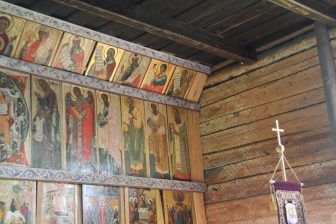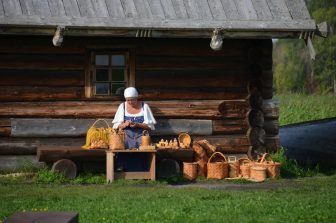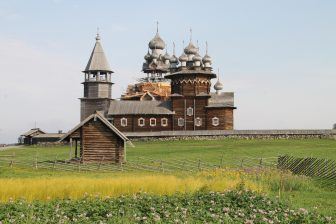
[ Aug.2017 ] During our cruise tour in Russia, the place I liked most was the Kizhi Island.
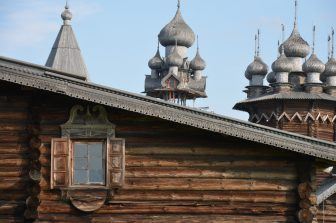
This island is an open air museum with the main attraction being the Transfiguration Church which was originally built here and other traditional wooden buildings dismantled and rebuilt here from the nearby area.
It is listed as a Unesco World Heritage site.
Before arriving here, Paul, our tour leader told us “Kizhi is paradise if it is sunny, but hell if the weather is bad” and fortunately, we had a very good weather.
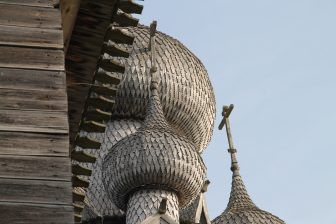
We were led by a middle aged female guide, Nadia, on this green island.
Unfortunately the Transfiguration Church was under restoration work and within the 21 cupolas, some of the middle ones had been removed.
Nadia started saying “The restoration was started at the bottom part and next year they are going to work on the top part, so it will be completed in two years time”, then corrected herself “probably in three years time…”
She told us that if they used only new wood for the restoration, that would be less authentic, so they keep about one third as it is, for one third they use new wood and the rest is a mixture of the old and the new.
This church was originally built in 1714.
They did not use any metal nails to build this, but according to Nadia, “That was only because the metal nails were too expensive in those days. When they became cheaper, they started using them”.
We could not get into this church because of the work, so we went to the next one called Church of the Intercession, built in 1764.
Inside was full of icons and in front of the altar, the men dressed up like monks sang Russian hymns for us.
They sang brilliantly and it touched my heart, the voice of the bass was especially amazing.
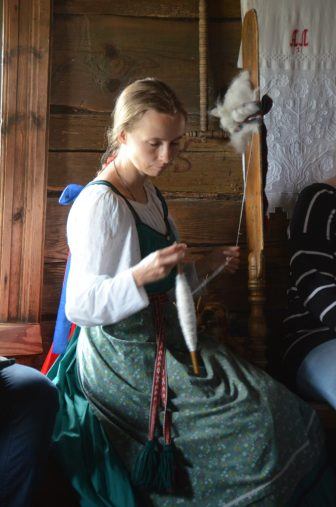
In the living room, in which people eat, work, sleep, etc. there was a large stove and children and old people slept on it because that was the warmest place.
They did not seem to have much furniture but the big beams were used as shelves.
The beam near the entrance was a sort of dividing line and any uninvited guests could not cross the line.
The invited guests were given tea which was made very strong and diluted by hot water boiled by the samovar.
The tea was usually too hot, so people pored it on the saucer and sipped it from there little by little.
The women were working all the time in the house and in the dark winter, they mainly did spinning because they could do it without looking but feeling of their finger tips.
The room upstairs was for guests and there was furniture here.
A woman wearing traditional costume was showing the traditional way of making necklaces with beads.
In the past, they made them with pearls which used to be produced in the lake.
Here and there, there were staff members doing this kind of demonstration and Nadia explained that all of these skills were lost and they had to investigate to recover them.
One of the demonstrations was making the tiles which made up the onion shaped cupolas, which was made of wood from the Aspen tree.
The last event of our tour was listening to a performance of ringing bells.
We had another occasion to listen to the bells later.
It is not familiar to us, but bell ringing performances seemed important in Russia and the skill is very much appreciated.

